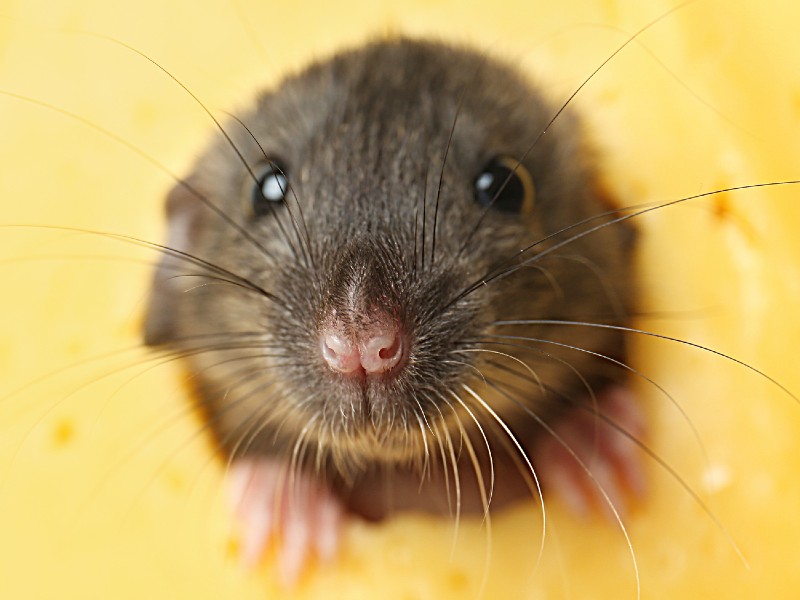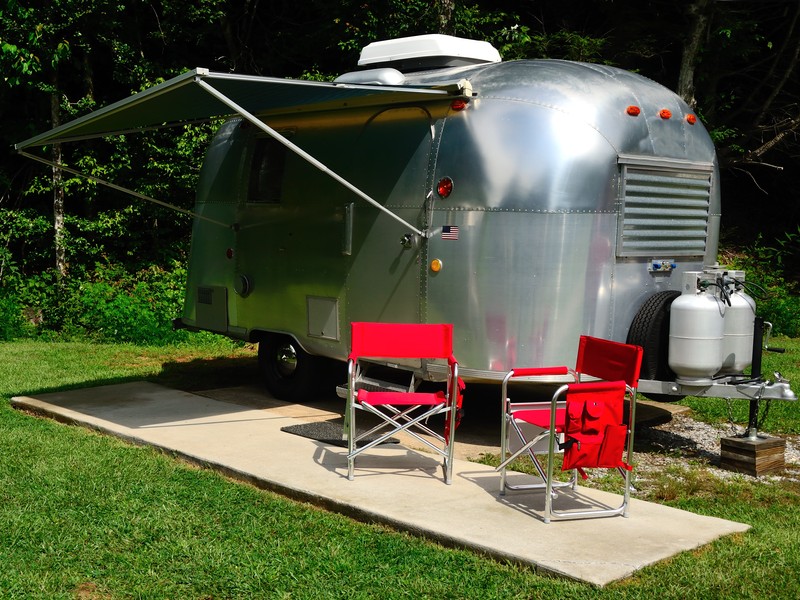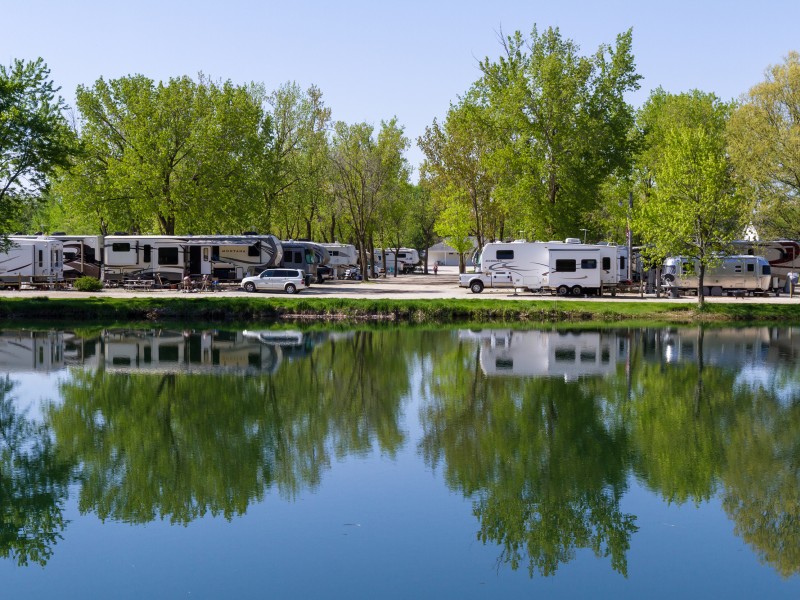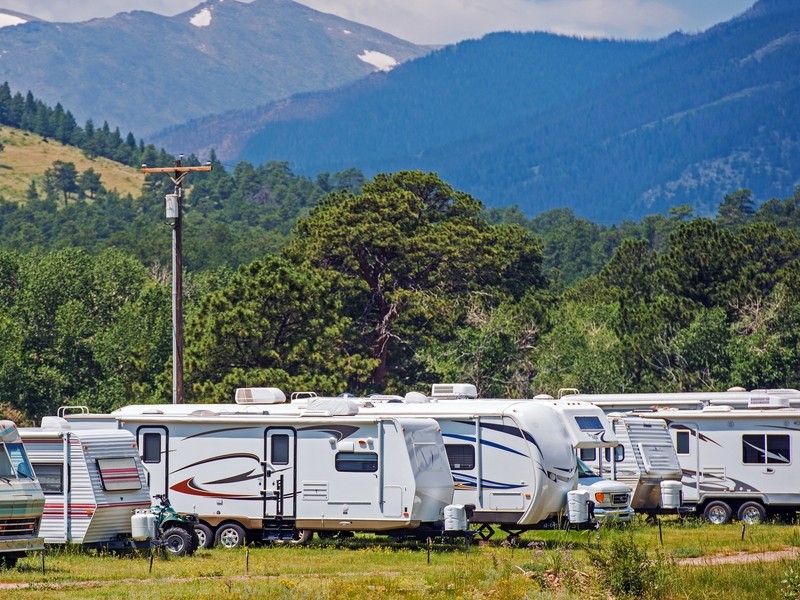Are mice invading your camper, and you want to put a stop to it?
Having mice take up residence inside your camper, especially during long-term storage, is common. An RV protects mice from predators and harsh weather conditions and is a safe place to make a nest to welcome the next generation of furry pests.
Unfortunately, mice don’t come in and leave your RV tidy when they depart. Instead, you’ll likely find droppings, and chewed-up couch cushions, wiring, and boxes. Other common destruction includes holes in cabinets or walls and nests inside motorhome engines that can damage parts.
As RVers, we know what it takes to keep mice out of your camper, and we share the best products and methods below. So, if you’re ready for a mouse-proof RV, this is the article you’ll want to read.
The Best Tips and Products to Keep Mice Out of Your Camper
The first step in keeping mice out of your RV is to block gaps and cracks that allow them to get inside.
Mice are crafty and persistent. Mice will chew holes through wood, foam, thick plastics, rubber, and even thin metals to reach the water, food, or safety they want. If they can’t get into the camper box, many will be happy to live in outdoor storage compartments or inside your motorhome engine.
How to Fill RV Holes to Deter Mice
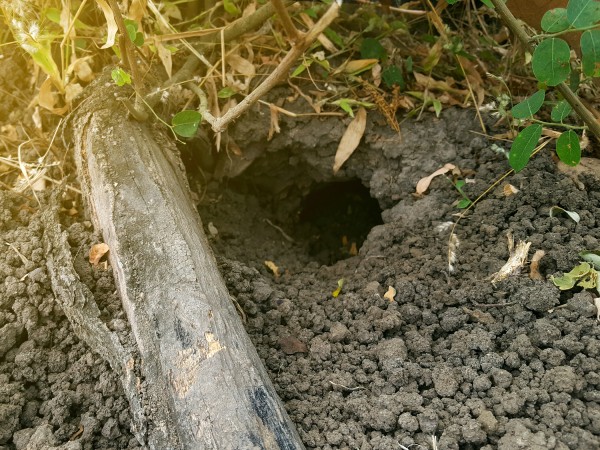
Blocking mice from entering your RV will not be easy. You’ll need to inspect the undercarriage, roof, inside cabinets and storage compartments, and under furniture and built-in items like the booth dinette.
Mice find places where the sunlight passes through very attractive, so wait ’til dark and light up your RV floors, ceilings, and walls using a flashlight. Then, have someone stand outside, look for spots where the light shines through, and mark them with painter’s tape so you can deal with them later.
Since mice can fit through spaces only 1/4-inch in diameter, there will be plenty of access points to seal off. Replacing damaged or worn gaskets, seals, or weatherstripping around doors and windows is an excellent place to block mice from entry.
Inspect places where pipes or wires enter or exit the RV, as well as louvered vents and any pass-throughs from the engine compartment into the dash or motorhome interior.
The key to success when filling RV gaps to stop mice is to use the correct products.
Spray foam is quick, but mice will chew right through it. Stuffing steel wool into the hole is always a top suggestion in RV forums, but in reality, mice will just pull it out, or it will eventually rust away and fall out on its own.
What you want on hand is a high-quality silicone adhesive caulk, rigid wire mesh with a 1/8-inch grid, a piece of sheet metal, small screws, and some copper mesh material, such as a Copper Blocker Pest Stopper. The real copper mesh will not rust and gets stuck in teeth if mice try to chew on it, so it’s a great product.
Start sealing off your RV by opening any louvered vents or doors, such as those on your RV exterior, to let the heat from the fridge or gas from the propane system escape. Cut a piece of rigid wire mesh to fit inside the panel, attach it using a silicone adhesive caulk around the edges, and press the mesh down. You may need to tape it in place until it dries.
For any large gaps or cracks in the undercarriage or side walls, it’s best to cut a small section of sheet metal to cover the hole and screw it down so mice can’t squeeze through.
Use caulk to fill smaller holes around pipes, wiring, or edges of cabinets or furniture. For more significant gaps, use a butter knife to tightly push the copper mesh material in to fill the space. Follow on top with silicone caulk to ensure the fabric won’t jiggle loose when driving and to further deter mice from trying to chew through.
More Tips To Discourage Mice While RVing
Here are some guidelines that will help deter mice from taking up residence inside your camper:
- Don’t leave pet food dishes out all-day
- Transfer all pantry foods into airtight, heavy plastic or steel containers
- Don’t park your RV in tall grass or near shrubs, branches, or trees (mice can jump)
- Avoid campsites near garbage cans or dumpsters
- Fix drips in RV pipes, and don’t park over areas that form puddles
- Try to keep all four RV tires on cement
- Don’t stack firewood near your camper
- Bury or burn garbage or food scraps if there is no other disposal option
The Best Products To Keep Mice Out Of Your Camper
Many available products claim to deter mice from your home or recreational vehicle, but unfortunately, not all are effective. We detail the best and worst options to help you make a better purchasing decision.
How To Prevent Mice In Your RV (Video)
MICE CONTROL DURING RV STORAGE
Using expensive electronic pest repellers that emit ultrasonic noise tends to have a low success rate. In addition, the need to plug the unit into an electrical outlet or use batteries makes it a poor choice to control mice in RVs sitting in storage long-term.
Using mouse poison pellets can work, but mice often carry them off and hide them all around your camper before they actually eat them and perish. So why create a bigger mess to clean up or miss some pellets and have your pets or kids find them?
Using baited mouse traps is better for dealing with mice intrusions when your camper is in storage. D-Con has an excellent bait station that safely contains the poison inside the box, or you can opt for straightforward snap traps like the Feeke Clamp Traps or sticky traps such as the Catchmaster MAX Pest Trap.
| Preview | Product | Rating | |
|---|---|---|---|

|
Pest Glue Trap by Catchmaster – 36 Boards Pre-Baited, Ready to Use Indoors. Rodent Mouse Rat Insect… | Check Price on Amazon |
If using traps where dead or dying mice may contact your RV flooring or furniture, it’s best to cut off the top of a milk or juice carton, rinse it out, and lay it on its side along the walls or cabinet inside your camper.
Place the mouse trap inside the carton. If you do catch a mouse, any blood or fluids will remain inside the carton and not seep into your RV. When you remove your RV from storage, it’ll be much easier and safer to shake loose the mouse from the trap, fold up the top of the carton, and toss the entire thing away.
Don’t forget to place some snap traps or poison bait stations inside your engine compartment. However, immediately note their location and tape them to your RV steering wheel, so you remember to remove them before starting it up.
DETERRING MICE DURING THE CAMPING SEASON
When actively using your RV, it’s much easier to keep mice away using simple and affordable household products you can refresh as necessary. These products have a scent that mice and other rodents don’t like but will make your RV smell nice and reduce musty odors.
Dryer Sheets
Using dryer sheets to keep mice out of camper hiding spots does work, and they are super easy to tuck into cabinets and drawers and under seats or furniture. Strongly-scented sheets, like Bounce products, work better than those with a lighter touch.
A large box isn’t going to bust your budget, and you’ll only need to replace them every couple of months because the scent lasts a long time.
While mice adjust to certain odors over time, dryer sheets are very effective if you’re moving your RV to new locations often during the camping season.
Explore the Great Outdoors with Us!
Scented Soap
Placing unwrapped soap with a strong scent, such as Irish Spring to keep mice out of the camper is another option. However, as the soap dries out, the smell dissipates, so you’ll need to either slice the soap up to refresh the scent or replace the whole bar every few weeks.
Pest-Repellent Pouches
Pouches such as EarthKind Stay Away Rodent or Fresh Cab Rodent Repellent use botanical mixes and oils to deter mice from coming near. These pouches are best for small, enclosed areas, such as inside a closet or cabinet, so the scent fills the space.
Hanging these pouches out in the open lessens their scent life because the oils and botanicals dry up faster with exposure to airflow and sunlight.
A Word On Essential Oils
Soaking a cotton ball in peppermint or lavender essential oil is a highly touted way to keep bugs and mice out of RV, but in reality, this only works if you’re willing to refresh the cotton balls almost daily.
The essential oil scent dissipates very quickly when exposed to air, and the actual cotton ball is attractive to mice for nest-making. So bypass this method to control RV mice problems and stick to more long-lasting options.
How to Prevent Mice From Climbing RV Tires
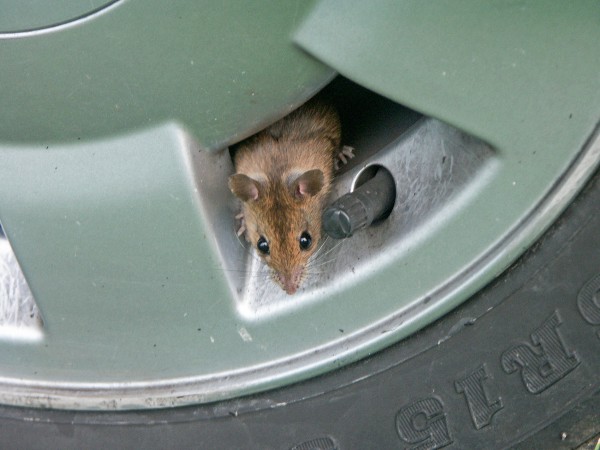
Many people overlook their tires when trying to keep mice out of their camper. Climbing to the top of tires gives mice immediate protection and puts them close to undercarriage components and small gaps where they can enter your RV.
If you’re parking your RV in an area known for high mice activity, you can create tire barriers using pieces of sheet metal you wrap around each tire.
You create a 16 to 18-inch-tall tube around each tire and attach the edges using aluminum tape meant for ductwork. The tube surface will be too slick for mice to climb and too tall for them to jump over.
When it’s time to leave the campsite, remove the tape from the tubes and store them flat until you need them again.
The Safe Way to Clean Up Mouse Droppings
The last thing an RV owner wants to spend time on is cleaning up after mice in the camper when you really want to hit the road on your next adventure.
Sure, you can quickly wipe or sweep away the droppings and clear away nests, but doing so can lead to serious health issues.
Mouse poop, urine, saliva, and nest bedding materials can carry hantavirus. Even entering a poorly ventilated RV full of mouse activity, such as after many months of winter storage, can pass the disease when you breathe in the air.
The hantavirus can live on surfaces for up to three days at room temperature and much longer when the temperature is cold or even freezing. However, sunlight decreases the length of the virus, and remains infectious.
Touching or breathing in particles carrying the virus during cleaning can transmit Hantavirus Pulmonary Syndrome, a severe and sometimes fatal lung disease. Mice and rats infected with hantavirus have been found across the US, so you can’t let your guard down when clearing your RV of mice droppings or nests.
When you spot mouse droppings or activities, you must ventilate the RV by opening windows and doors and then follow safe practices to clean up the mess. Avoid touching live mice, even those cute little babies, or dead rodents caught in traps without wearing protective gear.
Start your clean-up by putting on vinyl, rubber, or latex gloves and wearing an N95-rated face mask. Then, fill a spray bottle with four parts water to one part bleach. Finally, soak any droppings or bedding you see with bleach water and let it sit for about five to ten minutes to kill any viruses or bacteria.
Use paper towels to pick up the mess and place it immediately into a thick plastic trash bag. Tie the bag up tightly and throw it away.
Once the RV is free of droppings and bedding materials, ventilate the space, use a disinfecting spray over every surface, even inside cabinets, and allow it to dry.
Mice In RV Wrap Up
No one wants to see mouse droppings in their RV or hear them scurrying about at night when they’re trying to sleep. Using barrier methods in combination with traps, poisons, off-putting scents, and proper food storage and parking techniques can eliminate mice issues in your camper.
We hope the valuable information above helps you eliminate mice in your RV so you never have to travel with fuzzy little passengers again!
Related Questions
- What are some common signs of a mice infestation in a camper?
Common signs of a mice infestation in a camper include gnawing marks on wires, insulation, and food containers, as well as droppings and urine stains in hidden areas.
You may also hear scratching or scurrying noises, especially at night, and find nests made of shredded material.
- Why is it important to inspect the undercarriage, roof, and inside cabinets of your camper for mice entry points?
Inspecting the undercarriage, roof, and inside cabinets of your camper for mice entry points is crucial to prevent infestations, as these small creatures can cause significant damage to wiring, insulation, and other components, potentially leading to costly repairs.
Additionally, mice can carry diseases, so their presence poses a health risk to individuals using the camper, making it essential to identify and block their entry points to maintain a safe and clean environment.
- What are some effective products for filling RV gaps to stop mice?
Some effective products for filling RV gaps to deter mice include steel wool, which can be stuffed into small holes and cracks as mice cannot chew through it, and expanding foam sealants like Great Stuff Pestblock, which expands to fill larger gaps and contains a deterrent to prevent pests from gnawing through.
Additionally, consider using a product like Fresh Cab Botanical Rodent Repellent, which can be placed in your RV to deter mice with its strong, balsam fir oil scent.
- How can parking and storage habits influence a mice infestation in your camper?
Parking your camper in areas with high rodent activity, such as near fields or woods, can increase the risk of a mice infestation as these environments are natural habitats for mice.
Poor storage habits like leaving food out, not sealing entry points, and clutter that provides hiding places can also attract mice and contribute to an infestation.
- What precautions should you take when cleaning up mouse droppings in your camper?
When cleaning up mouse droppings in your camper, it’s crucial to avoid stirring up dust by sweeping or vacuuming, as this can spread potentially harmful viruses present in the droppings.
Instead, wear rubber or latex gloves, spray the droppings with a bleach and water solution (1 part bleach to 10 parts water), let it soak for 5 minutes, then wipe up with a paper towel or rag and dispose of it in a sealed plastic bag.
"Of all the paths you take in life, make sure a few of them are dirt."
-- John Muir
